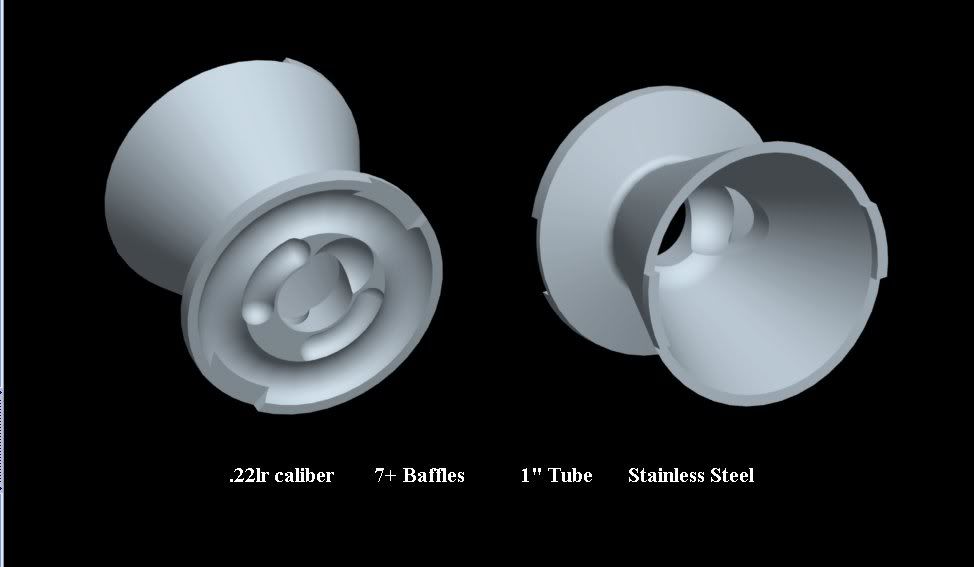This is my current concept for a box suppressor for a PPK/S (although the design should be adaptable to other pistols):

As you can no doubt tell, the baffles are a profile of a cone. I made them that way because going in a straight line is pretty easy when cranking just one wheel. However, my inner imagination is telling me that circles would work better. That is, imagine a cylinder of appropriate radius and wall thickness normal to the box. This provides a nice differentiable curve to direct the gases away from the exit aperture and swirl them about inside the box.
In addition to being a differentiable curve, less surface area would be used. This means less volume of material in the box. More room for gas to expand.
I have to be realistic because I only get one tax stamp to work with for a given suppressor. I don't know exactly what I can and can not do within the law when I get my tax stamp. That is, can I dispose of many failures before getting the silencer I envisioned? I imagine that is a bit hypothetical since the BATFE does not have probable cause to see what I am doing in my own home. But the only realistic way to test is to go to a firing range that is about sixty miles from me. Many members are LEO. So I could be asked to present my stamped form. Well a copy anyway.
Sadly suppressors are not common at the range.
I'm sorry to conflate both legal and technical issues here. But as an honest citizen, I don't want to violate NFA + GCA rules when I am practicing with material in preparation for building an NFA regulated item.
Perhaps a simpler question would be, how do I mill arcs into a piece of plate metal with an end mill? Is that the correct tool for the job?
The baffles in the current model of the design mark three points which is sufficient to define a circle. Presumably machinists know geometry.
While I'm here, I've specified 0.125" walls. That chews up a lot of volume. While the box takes up 11ci, the inside volume is only about 6ci. I don't know how much pressure 6061 T6 or a more appropriate Al alloy can take without flexing significantly. The whole point of going with a box is to increase the internal volume in relation to the exterior size. Also I don't want to block the sights, such as they are, on the pistol. If anyone can give me some guidance on a wall thickness that will not burst or otherwise fail under pressure, I would be most grateful.
